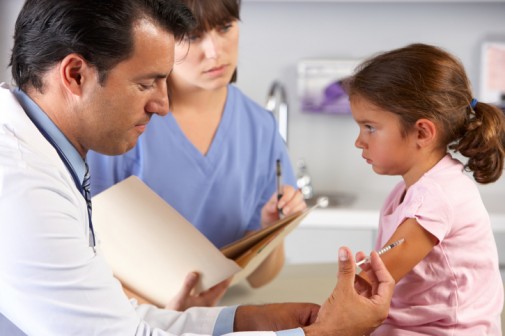Why girls aren’t getting the HPV vaccine

According to a new study published in Vaccine, only about half of girls in the United States are receiving the human papillomavirus vaccine (HPV) at the recommended age.
The Centers for Disease Control and Prevention (CDC) reports that 12,000 women are diagnosed with cervical cancer each year. To help prevent certain types of HPV that cause cervical cancer, the CDC recommends girls and young women ages nine through 26 receive the HPV vaccine.
Two HPV vaccines are currently available for cervical cancer prevention: Cervarix (a bivalent vaccine) and Gardasil (a quadrivalent vaccine). Gardasil has also been shown to prevent genital warts and other HPV-related cancers, such as anal and esophageal cancer.
“I absolutely recommend the vaccine to everyone within this age range regardless of their sexual status,” says Dr. Melissa Miller, obstetrician/gynecologist on staff at Advocate Sherman Hospital in Elgin, Ill. “The quadrivalent vaccine has been shown in studies to prevent 70 percent of genital warts and 85 percent of HPV-related cervical carcinomas.”
More common in teens and young adults, HPV is primarily a sexually transmitted infection that can affect both men and women.
“Young men should be vaccinated as well,” Dr. Miller says. “Not only can males serve as a vector for transmission, but they can develop other types of HPV-related diseases.”
Many people are not aware they have HPV because the infection usually has no symptoms, Dr. Miller says. Although most HPV infections go away on their own, some cases may lead to cervical cancer or other less common cancers in the future.
“The relation between HPV and cervical cancer is known; however, the number of cancer cases is declining in part to increased surveillance and diagnosis/treatment of pre-malignant disease as well as disease prevention with vaccination,” Dr. Miller says.
The HPV vaccine is most effective in females before they become sexually active. The Advisory Committee on Immunization Practices (ACIP) recommends that girls should begin getting the three-dose HPV vaccine when they are aged 11 to 12 years old. However, women who are sexually active still benefit from the vaccine.
“There are many misconceptions regarding the virus and the timing of acquisition in relation to disease onset,” Dr. Miller says. “It’s a challenging concept to grasp as the virus can lay dormant for years before causing disease. That’s why vaccination is key.”
Related Posts
Comments
2 Comments
About the Author
health enews staff is a group of experienced writers from our Advocate Health Care and Aurora Health Care sites, which also includes freelance or intern writers.


















I have a pretty good guess as to why some girls aren’t getting the vaccine. My daughter got the first installment, but there are two boosters after that and you have to make a separate appointment and take time off from work or school to get the boosters. There are only small windows during the day when my daughter’s pediatrician’s office will administer the boosters (of course not at any convenient time or on a Saturday) and I’m not going to pull her out of school or miss work for a five-minute injection. So if she needs a doctor’s appointment for more pressing reasons any time soon, she will get the second of three. And then maybe the third of three. This could take years.
My daughter had the vaccine and the boosters, however this report didn’t answer the question in the headline.